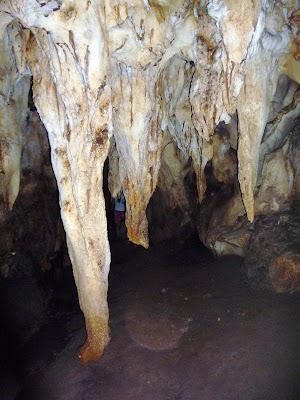The Philippines is unique in a region that is populated by Muslims, Buddhists, Hindus and other East Asian beliefs. About 92% of 90 million Filipinos are Roman Catholic, making the Philippines the third largest Catholic nation in the world, after Brazil and Mexico, and the only other predominantly Catholic nation in Asia aside from East Timor. So if you're a visitor, don't be surprised to see Catholic churches all over the place. Many of the old Roman Catholic churches that were built during the Spanish colonial period (1521-1898) are still standing across the Philippine archipelago. And Cebu Metropolitan Cathedral is one of the oldest.
It was in Cebu where the first Catholic mission was established. Cebu City, the oldest city in the Philippines founded in 1565, is also considered the cradle of Christianity in the Far East. Vicentine diarist Antonio Pigafetta recorded the first Easter Sunday mass held at the island-port named Mazaua (historians and scientists are still searching for the exact location of the said island depicted in Pigafetta's chronicles; some say it's Limasawa Island in Southern Leyte, others believe it's in Masao, the old name of Mazaua, in Butuan City) on March 31, 1521---possibly the same occasion when Portuguese explorer Ferdinand Magellan planted a cross on the island as a symbol of natives' embracing the Christian faith.
Cebu was established as a diocese in 1595 and initial construction of this church started in 1689 but typhoons destroyed the incomplete structure. Funds were not also available and it further delayed the completion of the cathedral. By 1720, preparations for the 4th attempt at construction were underway but funds were again diverted to fight Muslim rebellion in Mindanao. In 1733, a new bishop started the 5th attempt at construction of the cathedral but he died four years later, leaving the structure unfinished. The construction was not only plagued by lack of funds but also by the near-absence of available labor in the city to work on the church. From 1741 to 1886, numerous attempts at finishing the cathedral by various bishops were not
successful. By 1891, the new bishop consecrated the first stone of the new cathedral, it was probably the 7th attempt. The project proceeds in earnest but halted with the onset of the Revolution in 1898.

In 1904, the only American bishop of Cebu continued the cathedral rebuilding project started by his predecessor. The cathedral was finally completed in 1909 under the reign of Bishop Gorordo. The diocese was elevated into an archdiocese in 1934 and the cathedral underwent another renovation. The newly renovated cathedral was consecrated by Archbishop Reyes in 1940.
The architecture of this church is baroque, with thick walls to withstand typhoons and other natural calamities. The trefoil-shaped pediment is decorated with carved reliefs of floral motifs, an IHS inscription and a pair of griffins. The Spanish Royal Coat of Arms is emblazoned in low relief above the main entrance owing perhaps to the contribution of the Spanish monarch to its construction.
A huge part of the cathedral was destroyed by Allied bombings in 1944, with only the belfry, the facade and the walls remaining. The centuries-old archives and records of the archdiocese were lost forever. The church was rebuilt in the 1950's. (Sources: Wikipedia, Historical Conundrums, CPCBonline)
Cebu Metropolitan Cathedral at dusk



















































